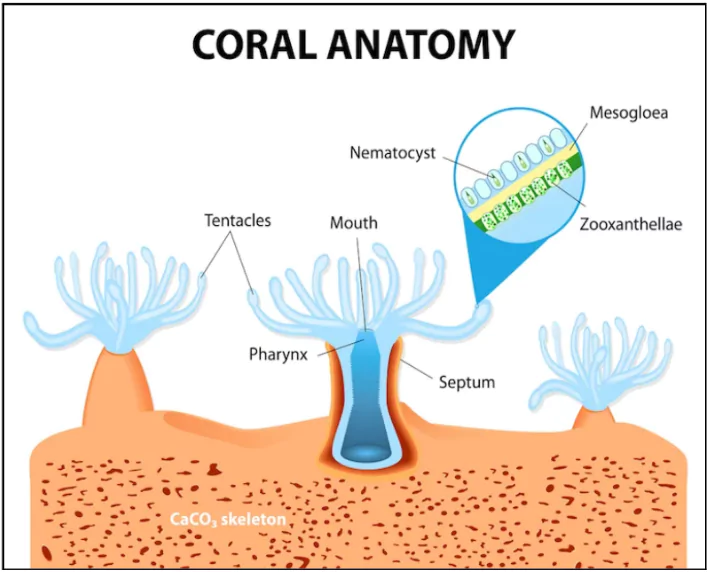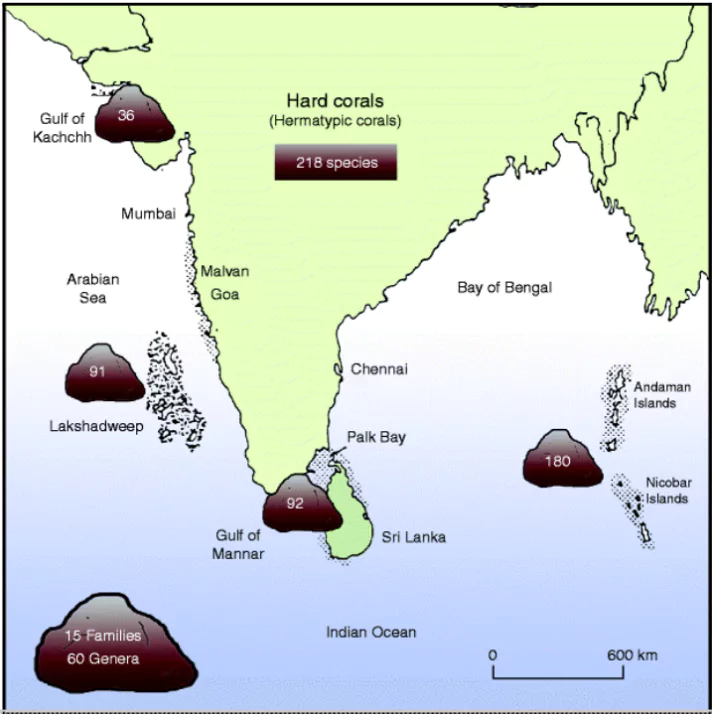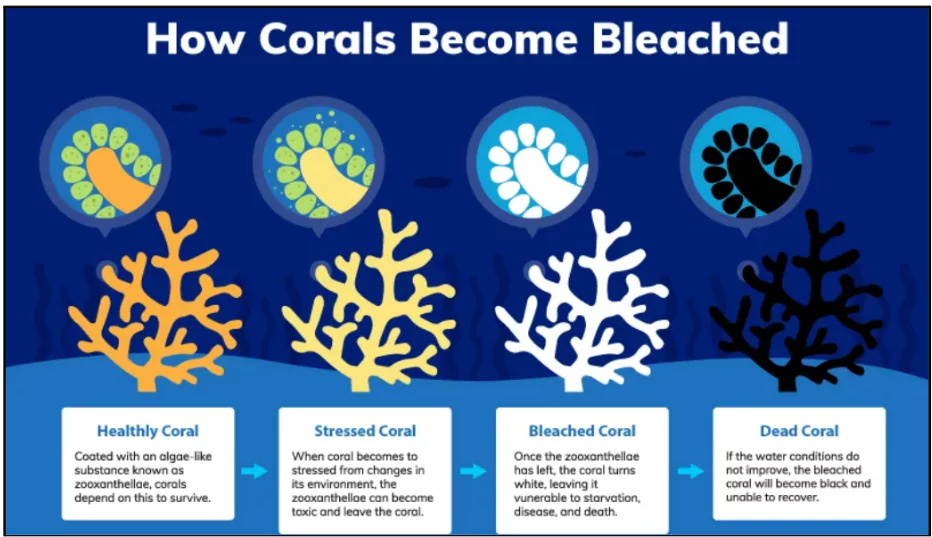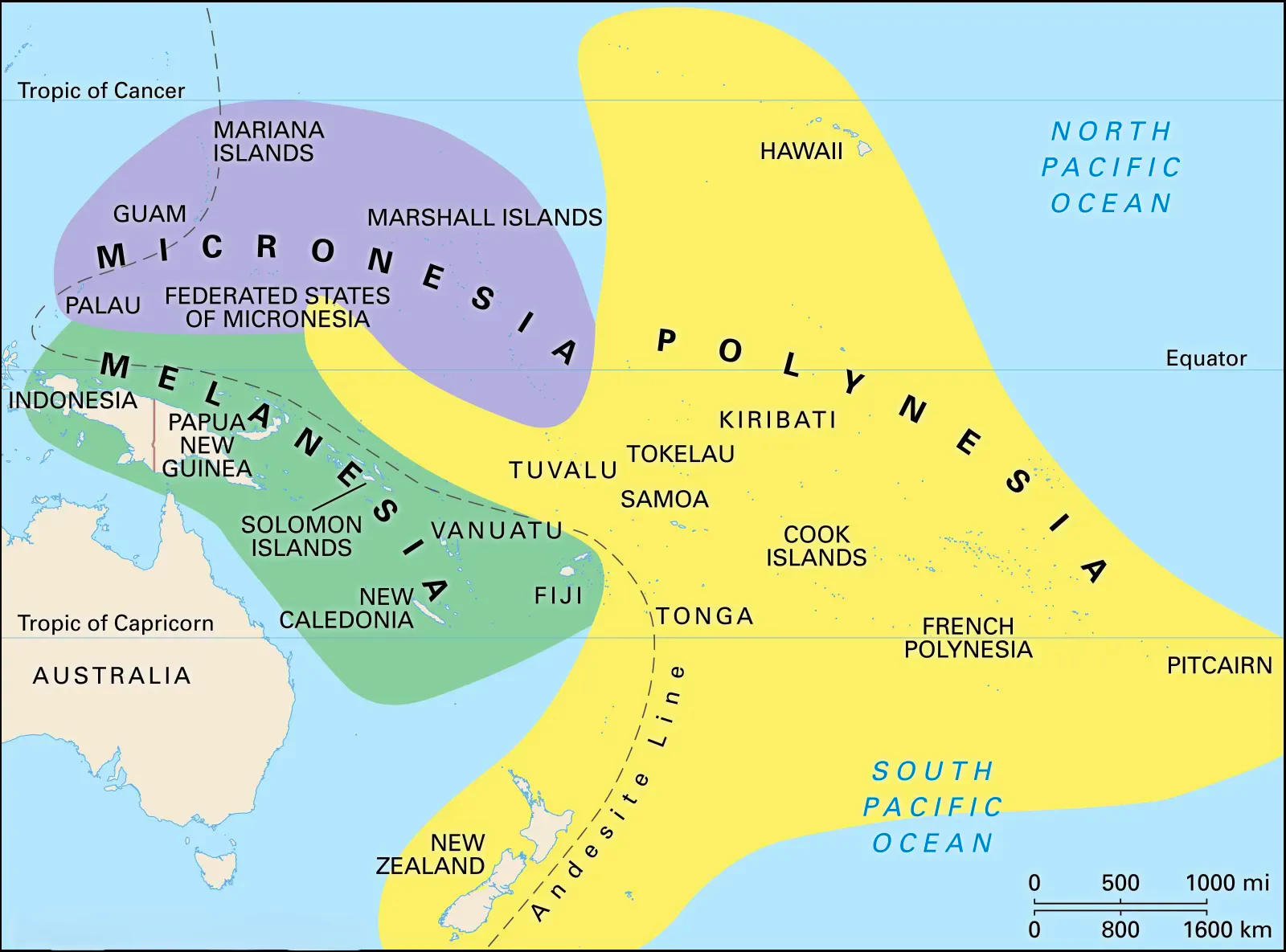In a groundbreaking discovery, researchers have uncovered the world’s largest coral colony in the Solomon Islands, located in the southwest Pacific Ocean.
Key Highlights About Largest Coral Colony
- Discovery: Found during an October 2024 expedition by National Geographic’s Pristine Seas team.
- Discovered accidentally by a videographer documenting climate change impacts on the Pacific Ocean.
- Size and Age: Measures 112 feet by 105 feet, rises 16 feet from the ocean floor, and lies at a depth of 42 feet.
- Estimated to be around 300 to 500 years old.
- Type of Coral: Identified as Pavona clavus (shoulder blade coral).
- Distinctive features include column-like structures resembling shoulders and vibrant colors brown, yellow, red, pink, and blue.
- Unique Characteristics: Made up of nearly a billion individual coral polyps functioning as a single organism.
- Described as resembling an “underwater cathedral,” evoking awe and a connection to the past.
Enroll now for UPSC Online Course
Significance of the Discovery
- Resilience and Vulnerability: Likely protected from climate change impacts due to its depth, avoiding warmer surface waters.
- Highlights the dual nature of coral ecosystems that is beauty and fragility in the face of warming oceans.
- Call for Action: Serves as a reminder of the need for conservation to protect coral reefs, which are vital to marine biodiversity.
- Stresses the importance of preserving such ecosystems for future generations amidst climate challenges.
- Identification of hidden : Local residents may have mistaken the colony for a rock due to its size and appearance, emphasizing the hidden richness of nature.
About Corals
- Nature and Structure: Corals are sessile animals permanently attached to the ocean floor, resembling colorful plants but are animals.
 Composed of individual animals called polyps, which build hard, cup-shaped skeletons of calcium carbonate (limestone) using ions from seawater.
Composed of individual animals called polyps, which build hard, cup-shaped skeletons of calcium carbonate (limestone) using ions from seawater.
- Polyps’ Features:
- Stomach with a Single Opening: Serves as both mouth and anus.
- Tentacles: Used for defense, capturing prey, and clearing debris.
- Functionality: Food enters through the mouth, waste is expelled from the same opening.
- Symbiotic Relationship with Zooxanthellae:
- Zooxanthellae (Algae): Provides corals with food and nutrients via photosynthesis using sunlight.
- Responsible for the vibrant colors of corals.
- Corals: Offer algae shelter and nutrients.
- This relationship makes corals highly dependent on favorable environmental conditions.
What is a Coral Reef?
- A coral reef is a diverse underwater ecosystem formed primarily by coral polyps, tiny marine animals that secrete a hard calcium carbonate skeleton.
- Over time, these skeletons accumulate, creating complex structures that support a wide variety of marine life.

Regions of Coral Reefs
Coral reefs thrive in warm (23°–29°Celsius), shallow waters with high levels of sunlight. They are predominantly found in tropical and subtropical regions. The most significant coral reef regions include:
- Indo-Pacific Region: This region encompasses the Coral Triangle (Indonesia, Malaysia, Philippines, Papua New Guinea, Timor-Leste, and Solomon Islands), the Great Barrier Reef in Australia, and other reefs in the Indian and Pacific Oceans.
- Caribbean Region: This region includes the Caribbean Sea, the Gulf of Mexico, and the Florida Keys.
Check Out UPSC NCERT Textbooks From PW Store
Types of Coral Reefs Found in India
| Type of Coral Reef |
Description |
Location in India |
| Fringing Reefs |
These reefs grow close to the shore, forming a narrow band. |
Andaman and Nicobar Islands, Gulf of Mannar |
| Barrier Reefs |
These reefs are separated from the shore by a lagoon. |
Andaman and Nicobar Islands |
| Patch Reefs |
These are isolated, circular or oval-shaped reefs. |
Andaman and Nicobar Islands, Gulf of Mannar |
| Atolls |
These are ring-shaped reefs that enclose a lagoon. |
Andaman and Nicobar Islands, Lakshadweep |
Ecological Significance of Corals
- Habitat Provision: Coral reefs provide complex three-dimensional structures that serve as homes for a diverse array of marine organisms, including fish, invertebrates, and algae.
- These intricate habitats offer shelter, breeding grounds, and foraging opportunities for many species.
- Biodiversity Hotspots: Coral reefs are renowned for their exceptional biodiversity, housing a quarter of all marine species.
- This rich diversity contributes to the overall health and resilience of marine ecosystems.
- Nutrient Cycling: Corals and the associated organisms within reef ecosystems play a crucial role in nutrient cycling.
- They help in the recycling of essential nutrients like nitrogen and phosphorus, which are vital for the growth of marine plants and animals.
- Oxygen Production: Corals, through their symbiotic relationship with photosynthetic algae, contribute to the production of oxygen in the ocean.
- Although the exact percentage is difficult to quantify, coral reefs undoubtedly play a significant role in maintaining oxygen levels in marine environments.
- Carbon Sequestration: Coral reefs act as carbon sinks, absorbing and storing carbon dioxide from the atmosphere.
- This process helps to mitigate the effects of climate change by reducing greenhouse gas concentrations.
- Coastal Protection: Coral reefs provide a natural barrier against waves, storms, and erosion, protecting coastlines and reducing the impact of natural disasters.

Climate change poses a severe threat to coral reefs
- Warming oceans: Rising sea temperatures trigger coral bleaching, leading to mass coral death.
- Ocean acidification: Increased CO2 absorption makes it harder for corals to build their calcium carbonate skeletons.
- Extreme weather events: More frequent and intense storms damage coral reefs.
- Sea level rise: Can smother shallow reefs and alter light conditions affecting photosynthesis.
Enroll now for UPSC Online Classes

About Solomon Island
- Location: Situated in Melanesia, a subregion of Oceania in the southwestern Pacific Ocean east of Papua New Guinea.
- Geography: Comprises two parallel chains of volcanic islands and small coral atolls. Located in the southwestern Pacific Ocean, featuring diverse marine and terrestrial ecosystems.
- Climate: Tropical climate with generally warm and humid conditions. Rarely experiences extreme temperatures due to cooling winds from the surrounding seas.
|
![]() 16 Nov 2024
16 Nov 2024

 Composed of individual animals called polyps, which build hard, cup-shaped skeletons of calcium carbonate (limestone) using ions from seawater.
Composed of individual animals called polyps, which build hard, cup-shaped skeletons of calcium carbonate (limestone) using ions from seawater.


